This is one of those dresses that was both deceptively simple and at the same time quite complicated.
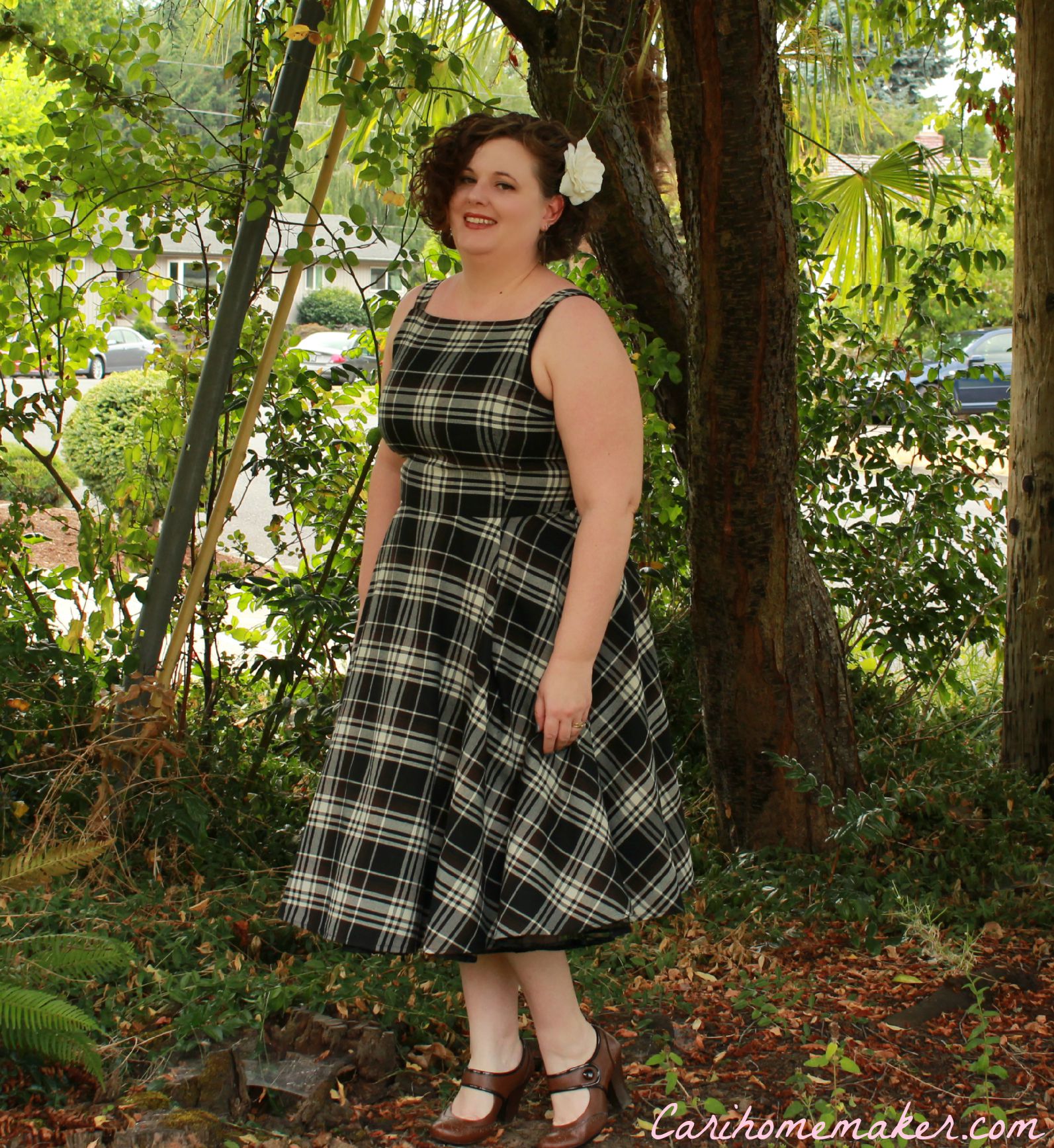 The pattern is By Hand London’s Flora dress with a lengthened hemline. The crinoline just barely peeks out, providing a bit of a lacy touch; though, the real reason for the crinoline is that the fabric wants to pick up static and the crinoline keeps the skirt from sticking to (and riding up) my legs. I’ve made other versions of this dress, but this is the first time I’ve used this version of the skirt. Keep in mind that if you also want to make a lengthened version of this skirt, you do have to cut the fabric cross-wise or find a fabric much wider than 60″. It’s not a particularly difficult pattern, and having made it a few other times, there were no surprises, so the simple part was mostly in the pattern construction.
The pattern is By Hand London’s Flora dress with a lengthened hemline. The crinoline just barely peeks out, providing a bit of a lacy touch; though, the real reason for the crinoline is that the fabric wants to pick up static and the crinoline keeps the skirt from sticking to (and riding up) my legs. I’ve made other versions of this dress, but this is the first time I’ve used this version of the skirt. Keep in mind that if you also want to make a lengthened version of this skirt, you do have to cut the fabric cross-wise or find a fabric much wider than 60″. It’s not a particularly difficult pattern, and having made it a few other times, there were no surprises, so the simple part was mostly in the pattern construction.
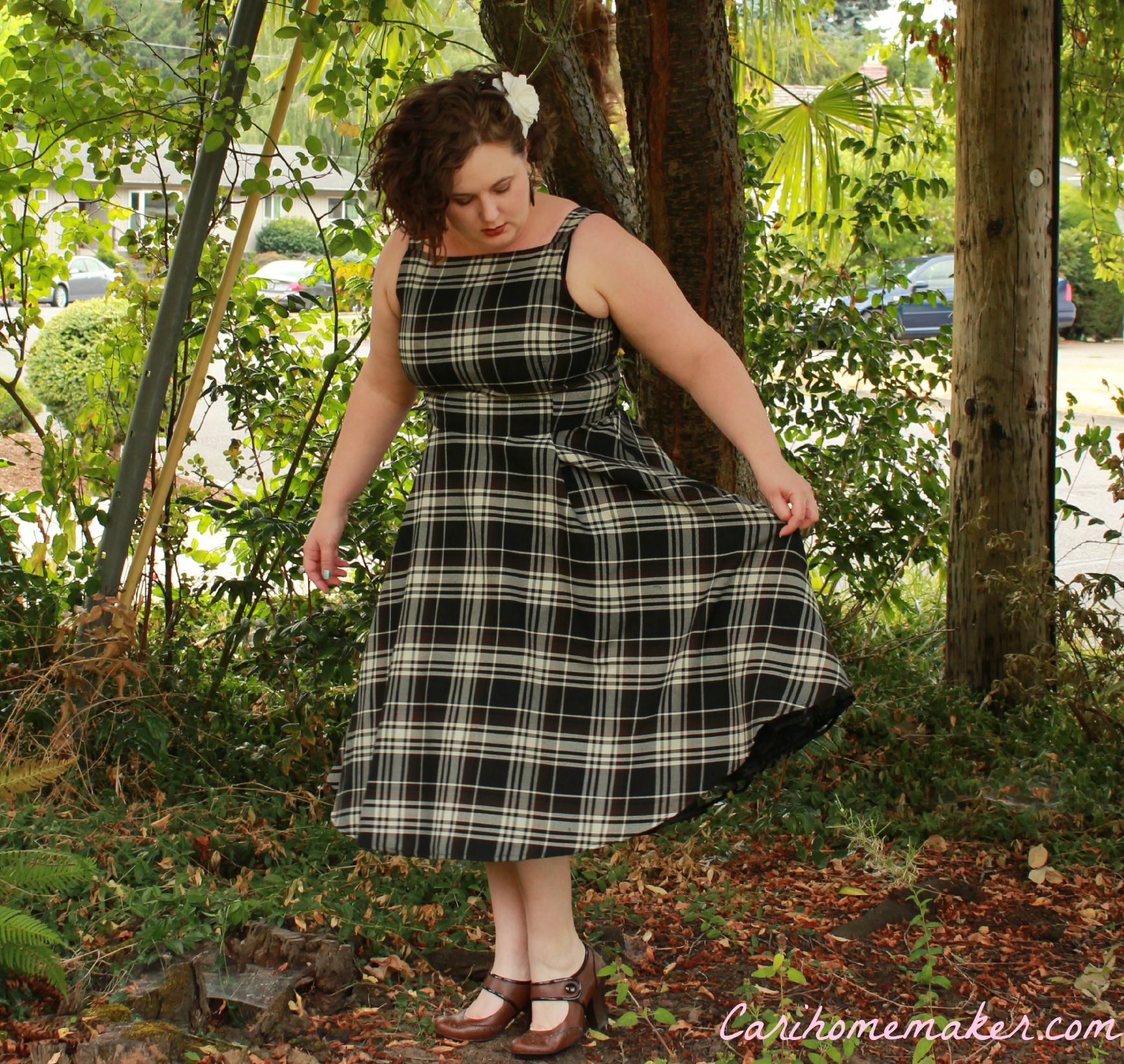 The difficult part of this dress was all in the fabric. The most obvious difficulty is the large uneven plaid. I hadn’t realized until I went to cut it out just how uneven a plaid this actually is. Since I cut the skirt on the cross-grain, I also had to cut the bodice on the cross-grain in order to match things up. I matched what I could and try to ignore what I couldn’t.
The difficult part of this dress was all in the fabric. The most obvious difficulty is the large uneven plaid. I hadn’t realized until I went to cut it out just how uneven a plaid this actually is. Since I cut the skirt on the cross-grain, I also had to cut the bodice on the cross-grain in order to match things up. I matched what I could and try to ignore what I couldn’t.
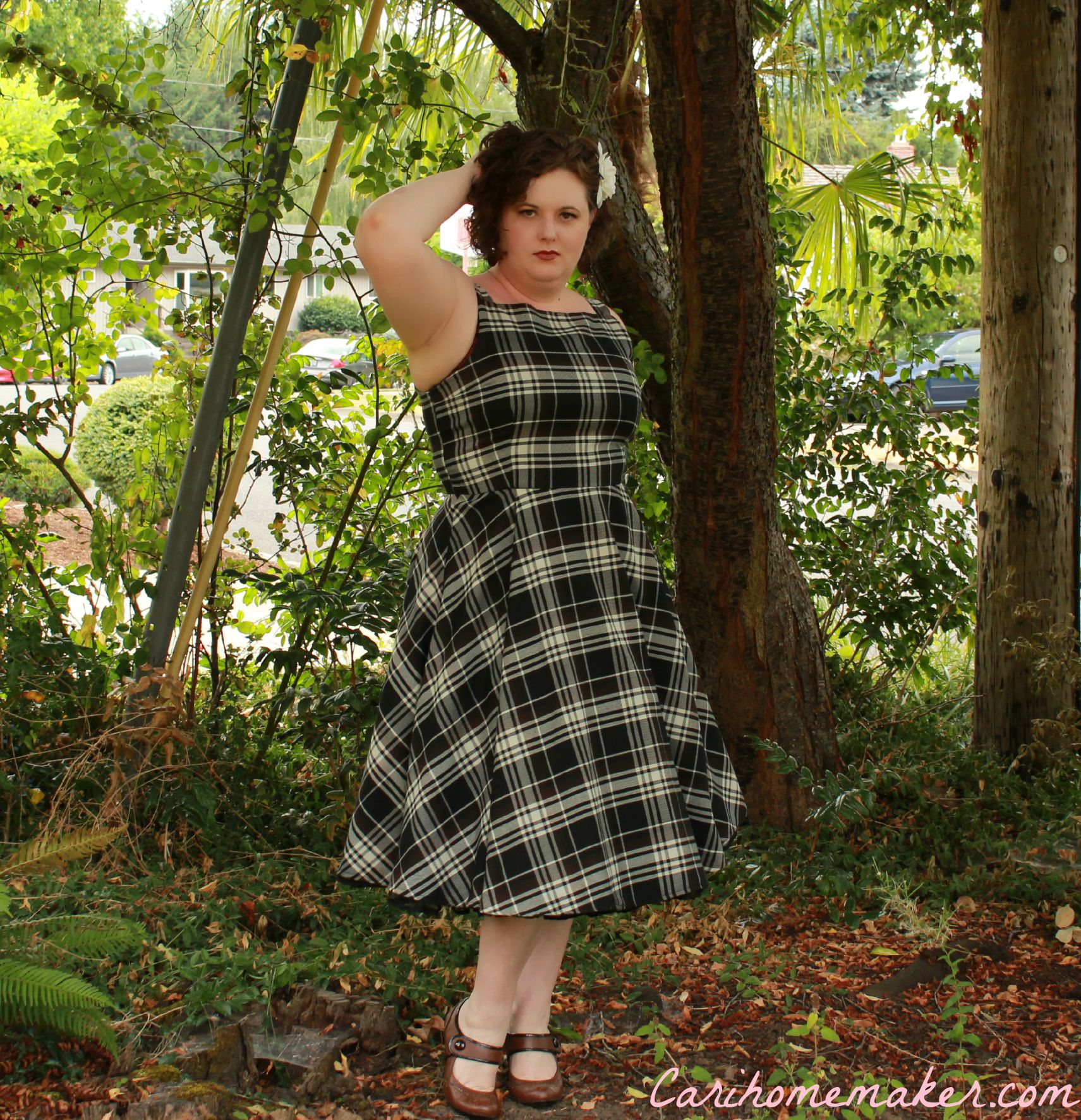 What’s more is that the fabric was not all continuous yardage. Its been in my stash for a few years, but it was one of those things where I found it at the fabric store and liked it enough that when I got to the cutting counter and found that it was several pieces, I bought it anyway. It’s some kind of acrylic suiting, but I’m pretty sure that a dress is a better use for it than any kind of suit would be. This fabric would be wretched to use in an attempt to make welt pockets. It was a pain to have to unpick certain things, like when I decided I wanted the straps to match each other rather than matching the plaids on their respective sides. I rather wonder if I shouldn’t give this pattern a bit of an FBA, but since there was so much fraying, I suspect that the bodice made up a little smaller than it should have. It also wanted to shift all over the place rather than behaving like a nice stable suiting should. You can see the effect of the shifting in how the plaid almost matches up along the back zipper, but just doesn’t quite exactly make it.
What’s more is that the fabric was not all continuous yardage. Its been in my stash for a few years, but it was one of those things where I found it at the fabric store and liked it enough that when I got to the cutting counter and found that it was several pieces, I bought it anyway. It’s some kind of acrylic suiting, but I’m pretty sure that a dress is a better use for it than any kind of suit would be. This fabric would be wretched to use in an attempt to make welt pockets. It was a pain to have to unpick certain things, like when I decided I wanted the straps to match each other rather than matching the plaids on their respective sides. I rather wonder if I shouldn’t give this pattern a bit of an FBA, but since there was so much fraying, I suspect that the bodice made up a little smaller than it should have. It also wanted to shift all over the place rather than behaving like a nice stable suiting should. You can see the effect of the shifting in how the plaid almost matches up along the back zipper, but just doesn’t quite exactly make it.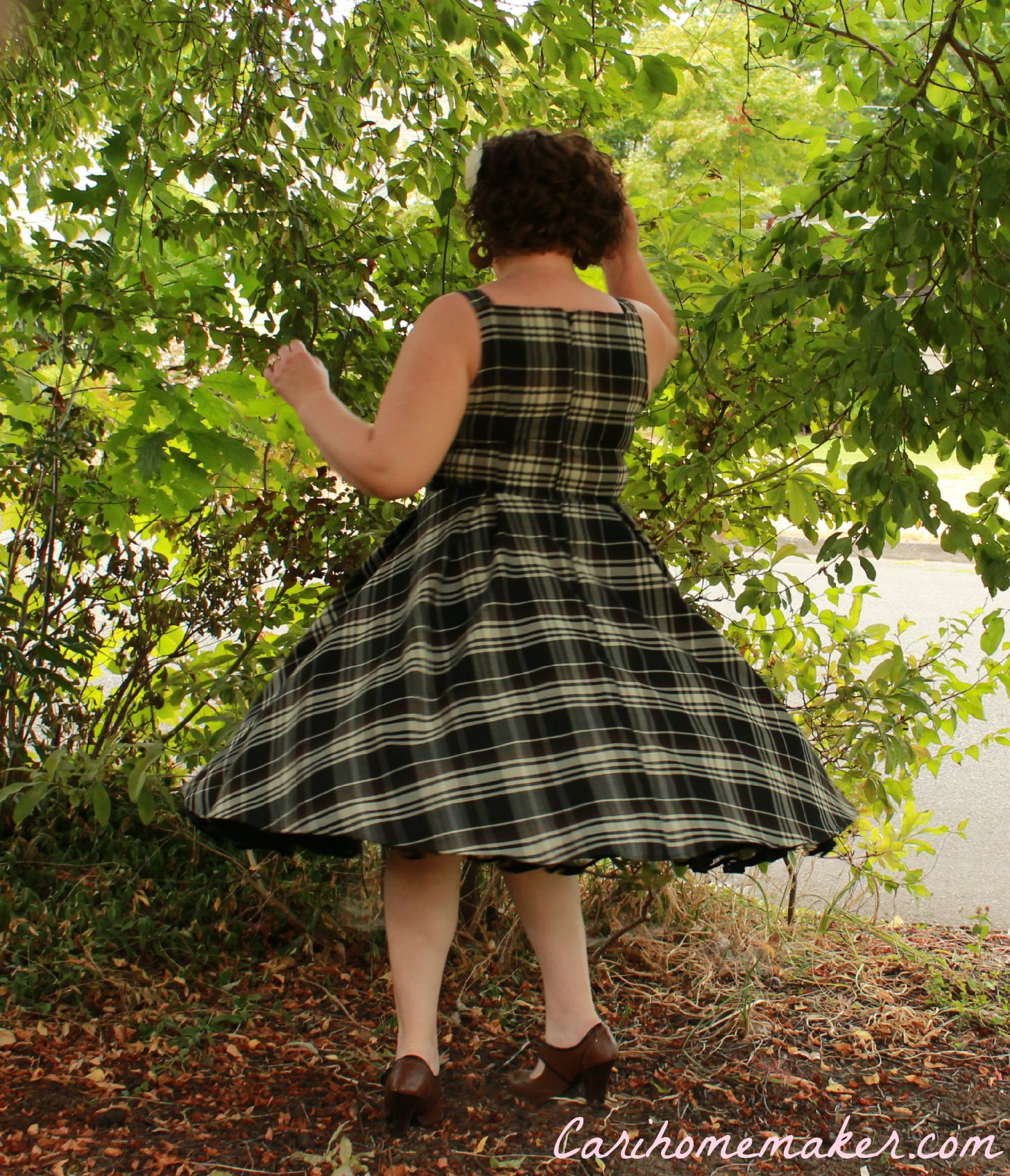 Plaid always seems to be in-style this time of year, but so often it’s hard to find transitional clothing that is appropriate for still-summery weather. I don’t think I’d choose to wear this on the warmest days of summer, since the fabric is so thick, but I think the 90 degree weather is behind us for this year. With no sleeves it will be easy to throw a sweater over it as things get colder.
Plaid always seems to be in-style this time of year, but so often it’s hard to find transitional clothing that is appropriate for still-summery weather. I don’t think I’d choose to wear this on the warmest days of summer, since the fabric is so thick, but I think the 90 degree weather is behind us for this year. With no sleeves it will be easy to throw a sweater over it as things get colder.
Stash-busting Stats:13 Projects this year. 34 yards of fabric.
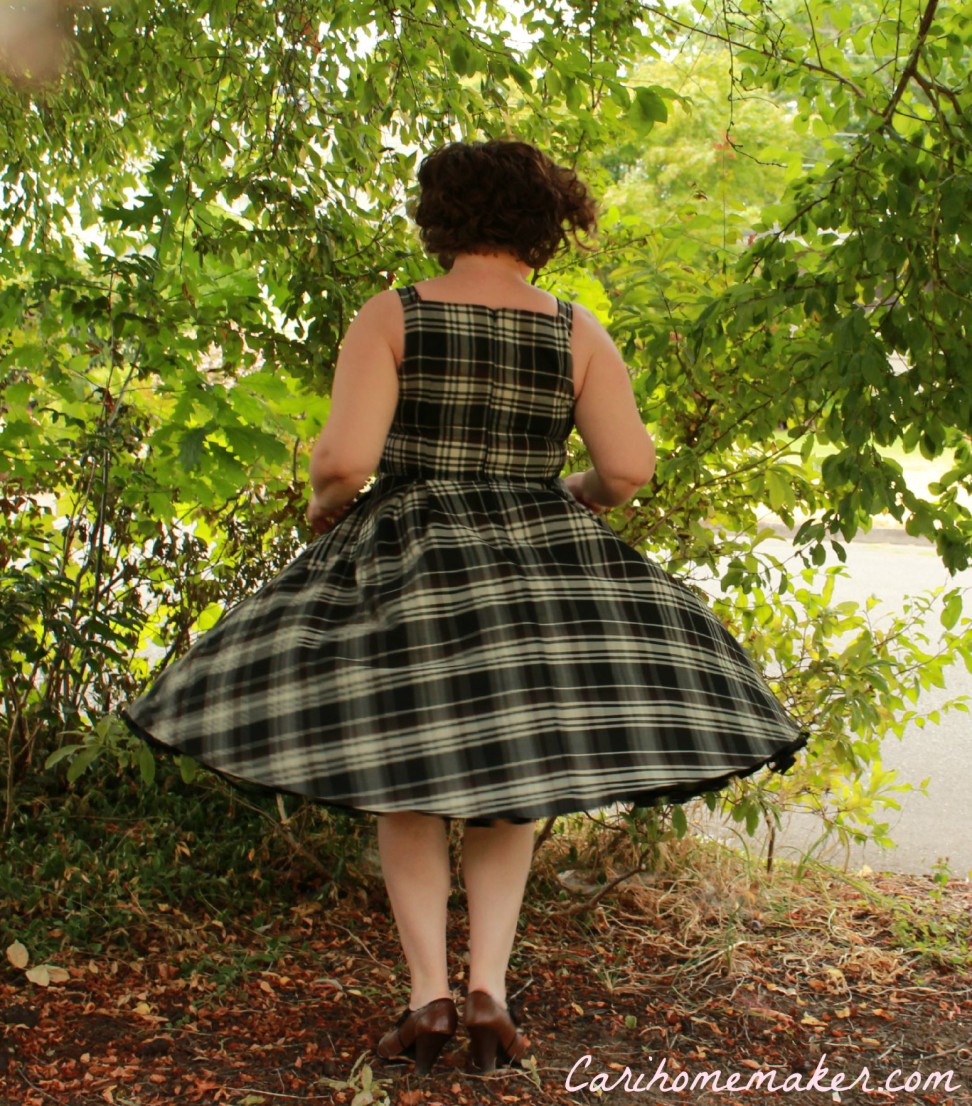
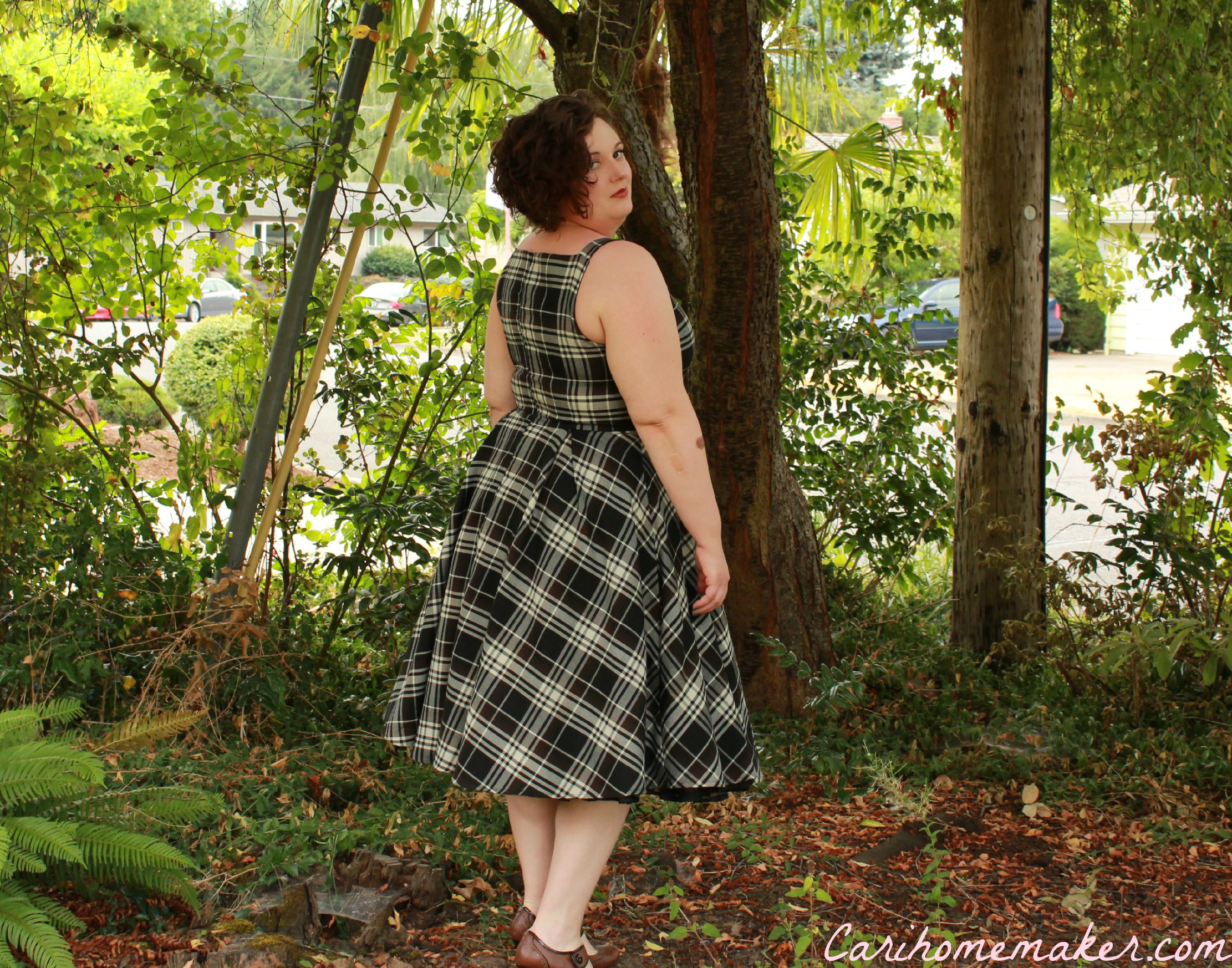
Leave a Reply